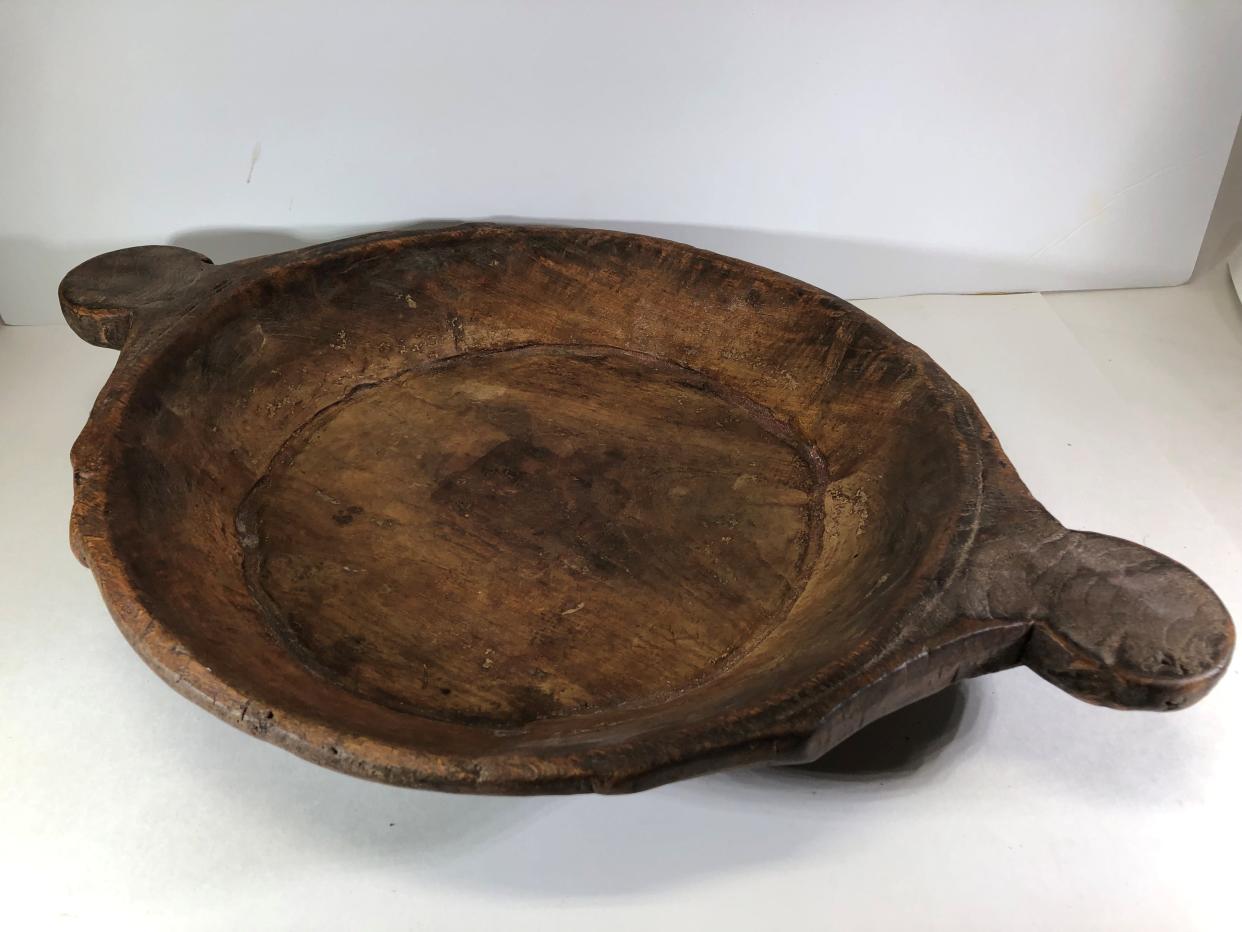Antiques: What exactly is a dough bowl?

Not long ago, I was chatting with one of our regular customers, and he made an interesting point. We were lamenting the state of the world when he said that we don't appreciate the choices available to us today when it comes to the simplest things.
A good example is bread. A trip to any grocery store will yield dozens of choices, all fresh and safe to eat. And how many times have you heard a waiter rattle off all the different breads that can house your deli sandwich: white, wheat, rye, sourdough, multi-grain, pumpernickel, etc. etc. But it wasn't that long ago that breads were made fresh at home every day, and it was a laborious process.
With that in mind, let's explore one element of breadmaking that has found its way into the antiques world: that of the dough bowl.
It seems that bread has been a staple of human existence since, well, forever. Early man somehow figured out that if you mix grains with water and heat it over a fire, you had something tasty you could eat.
Over the centuries, all kinds of grains were tried, and yeast was eventually introduced that made bread a little less dense. Additives such as dates, honey, herbs and spices provided variety and flavor, and as time went by breadmaking and thus baking became a specialty profession. During the Middle Ages, nunneries and monasteries often became sources of bread for their surrounding communities, and it is thought that the use of sourdough starters began around this time.
As the calendar rolled forward, new technologies emerged that helped make bread available to the masses. Before that, grains were harvested by hand or with horse and plow, but the Industrial Revolution brought with it such developments as the steam-powered roller mill that allowed bread to be produced in quantity.
Today, bread making has become highly automated with high-speed mixers and shaping machines able to crank out identical loaves by the millions. Nonetheless, artisanal breads made by hand are increasing in popularity with minimal ingredients and no preservatives.
As a result, the bread choices available to anyone today are like never before, all widely available and at moderate cost.
OK, so what exactly is a dough bowl? Well, dough bowls were found in kitchens throughout colonial America and were used as a place for dough to rise prior to baking. Wood was always the material of choice for dough bowls insofar as heat generated by the yeast was transmitted to the wood, thus allowing for a more even rise. And as opposed to just laying the dough out on a cutting board, the high sides of a dough bowl would protect the dough from drafts, further allowing for a nice even warming.
A good dough bowl was a family heirloom, handed down from mother to daughter and often kept for generations. The yeasty smell of rising dough was a cherished memory for many of that generation.
A few small firms still make dough bowls today, usually from dense cherry wood, and new ones require a breaking-in process much like that of a baseball mitt. They are typically finished at the factory with a combination of oil and wax, then sold with instructions for periodic vinegar baths and seasoning.
Old ones will occasionally turn up in antique galleries like ours, and we'll occasionally see aging Yankee farmers get misty-eyed when they encounter one. It's a sight from the past, and the smell they evoke is a reminder of days gone by.
If you're in the mood and have the patience of yore, roll up your sleeves and give the old way a try. You might just like the results.
Mike Rivkin and his wife, Linda, are long-time residents of Rancho Mirage. For many years, he was an award-winning catalogue publisher and has authored seven books, along with countless articles. Now, he's the owner of Antique Galleries of Palm Springs. His antiques column appears Sundays in The Desert Sun. Want to send Mike a question about antiques? Drop him a line at [email protected].
This article originally appeared on Palm Springs Desert Sun: Antiques: What exactly is a dough bowl?
